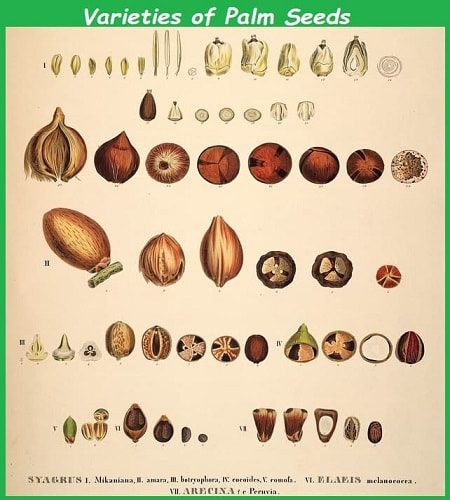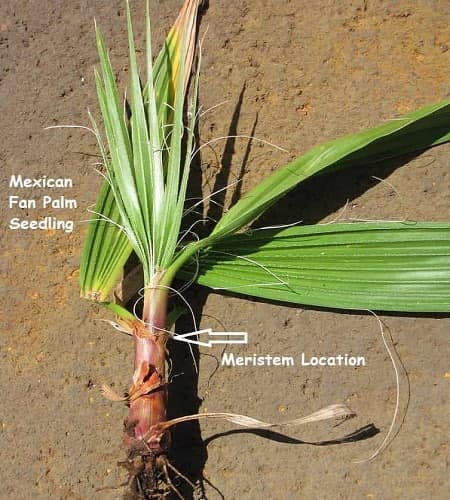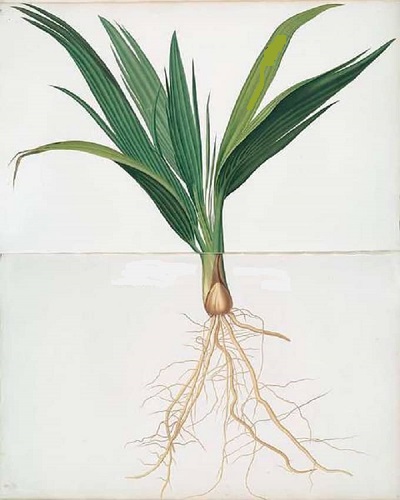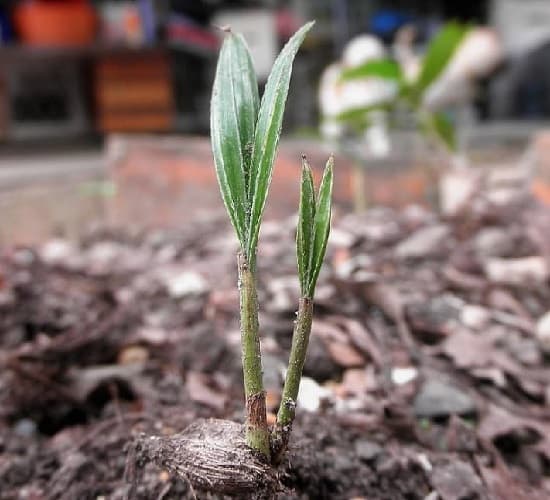- Home
- How Palms Grow
How Do Palm Trees Grow ??
How do palm trees grow is a behind the scenes look at the start of these plants.
Palm trees have been symbols of a warm, tropical paradise, we all know. Their distinctive looks! Often with a tall trunk, streams of flowers that make fruit, large flowing fronds, which newly grow out from the top.
But have you ever wondered how do palm trees grow?
Feeling overwhelmed by so many palm trees?
You're not alone. We Understand your headaches! At Mission: Palm Trees you'll find clear answers to questions & Step-By-Step Guidance, from real people. With solutions to help. No puzzling shoptalk. No tiring research. So it's easy & fun for you.
From seed to towering palm, a fascinating journey. Check out our clear-cut explanation of palm tree growth. Their growth process is kind of mysterious, because it's unique.
Here, we'll take you through the growing stages of palm trees. Knowing that info can also help you with facts that contribute to their healthy, successful growth.
 Planning to Plant a Palm Tree?
Planning to Plant a Palm Tree?And Wondering How Do Palm Trees Grow?
Smart Question to Ask to Plan for Success!
Palm Seed Gets Planted
Palm trees most often begin by growing from seed.
The palm's seed is dormant at first, or in a resting/sleeping stage. When it anchors itself into needed surroundings, it begins its growing for future life. It's the beginning of germination.
For that to happen, palm seeds need the right circumstances.

Our latest
-
Freeze Damaged Palm Trees - Help The Hurt!
Freeze damaged palm trees can stress you out. And stressful for your palm, too! We show you how to help it recover. And tips to avoid it. -
Types of Indoor Palm Trees - Your Best Guide
Types of indoor palm trees we show you are wonderful indoor potted plants. Bring in a breezy tropical vibe while freshening the air!
THE CIRCUMSTANCES
Timing for how palm trees grow from seeds can start from a few weeks to multiple months. It all depends on the seed's "luck of the draw" so to speak. (As well as the Species.) For instance,
- Was the Palm Tree Seed formed correctly, to begin with? Are all its parts healthy?
- Were the innermost food resources (kept in the endosperm) of the seed enough to begin palm tree growth?
Was it able to arrive in a suitable growing place? In nature, basically getting there two ways (most of the time):
- Animals eat palm fruit containing the seed. When the animal voids wastes, the undigestible seed plops there.
- Some fruit flows along in water streams until landing in a place to germinate. Think of a coconut flowing across a bay.
- A third way is growing near where it landed, maybe rolling around further away from its "mom" palm - with a wind push, or any odd happening.

FOR CULTIVATION
To grow palm trees, flowers must first be pollinated to produce seeds. It's helpful to think of whether the palm you want is Monoecious or Dioecious. To see how easily pollinators will be successful.
Wondering how do palm trees grow, if you want to Try Planting Palm Seeds yourself? It is possible. But there are some things to remember. It takes consistent care & work.
The seed should be planted in well-draining soil mixture. Then keep it moist until it sprouts. When the seedling pops out of the soil, give it a sunny place to grow. Water it regularly, but don't let the soil become soggy. Give it good drainage. This will help your new palm continue growing.
ONE EXAMPLE OF HOW TO PLANT PALM SEEDS
BUT NOT DIY FOR ALL PALMS
Still remember, not all palm trees can easily or normally be grown from seed. Some Palm Species need specialized care. Some must have particular propagation methods, usually handled by a professional nursery.
Some consider them Environmentally Questionable. So it's good to consider what type of palm seed you'd like to plant, and how it affects your Local Microclimate.
Palm Tree Seed Germination
When the seed activates, that's called germination. When that starts, lots of action is happening underground for awhile. Before you even realize the palm tree has started growing! Before you see that sprout pop up above the dirt.
FOOD FEED BEGINS THE PROCESS
Seed enzymes trigger feeding from the seed's endosperm. Giving energy to the embryo to begin growth:
- A tube pops out from the seed. Growing upward with the first new leaf shoot.
- From the tube's bottom, the first seedling root grows downward. This primary root is thick, white & temporary.
HOW DO PALM TREES GROW ROOTS?
- Usually some roots grow out sideways from it. To begin anchoring the seedling. Streams of Adventitious Roots start growing from just under the soil.
- The primary root is gradually replaced by the area called the Root Initiation Zone. Setting up success for how palm trees grow.
- GROWING TIP: Root growth is always quickest with warmth.
Most palms follow this basic start. As usual there are some exceptions to the rule!
How Do Palm Trees Grow From Germination?
Growth Stages of a Palm Tree
Palm trees have several growth stages through their life.
OVERVIEW
First: Seedling Stage - The palm comes out from the seed, beginning to grow. (As we've seen.)
- To establish its first sprouting leaf & stalk that becomes the trunk.
- At the lower end, creating its Root Initiation Zone.
Second: Juvenile Stage - Growth continues by developing its widening trunk & growing fronds.
- What exactly are these fronds? The palm's leaves that provide a "food factory."
- Later in this stage, palms produce their first flowers, then fruit.
Third: Mature Stage - Palms reach their full height. They continue growing large numbers of flowers & fruit.
Fourth: Decline Stage - Its final part of life. The palm tree begins showing aging signs, toward its ending lifespan.
CLOSER LOOK AT PALM GROWTH
The seedling shoots up above ground to begin the Palm's Establishment Phase. That's when it's life is perhaps the most unsteady. It needs the right time, the right place & the right care.
When the seed has sprouted, the young palm begins growing from the plant's center. The growth point, also called the meristem, bud or heart. This really is the heart of the palm. For if it dies, so does the palm tree!
 Uprooted Mexican Fan Palm Seedling
Uprooted Mexican Fan Palm SeedlingPhoto: Forest & Kim Starr @Flickr - CC BY 4.0
GROWING ROOTS
Primary adventitious roots usually grow outward, in a wide circumference. Sometimes they grow downward or above ground. Their main purpose is anchoring.
Now roots get into their beginnings for full development. All palm roots' growth begins at their maximum thickness. As they extend in length, they never thicken further.
Root growth can branch out to 4 levels. Each level's a bit smaller in size than the level above. But still, each initially grows out at its own maximum thickness. In other words as they get longer, they don't get thinner. These roots absorb water & nutrients. They attach to nourishment bundles in the stem (trunk).
 Vintage Artwork by Giorgio Gallesio
Vintage Artwork by Giorgio GallesioShows the Parts of a Newly Growing Date Palm
GROWING THE PALM TRUNK
Baby palms grow above ground by first working to bring the stem (trunk) to its widest circumference. While growing upwards a little with it's seed leaf. The primary job is producing new leaves, while expanding the width of the trunk. It won't grow more height until it gets that fully done.
When the trunk's maximal girth is reached, then upward growth can really begin. As the palm tree grows, it produces more fronds & continues increasing in height. Remember fronds are the food producing factory, once the seedling stage is done.
Many palm trees start growing up slowly. Speed depends on growing conditions & species.
 Ptychosperma macarthurii, commonly called MaCarthur Palm
Ptychosperma macarthurii, commonly called MaCarthur PalmThis Clumping Palm has Already Grown a 2nd Stem Shoot!
Photo: Jason Thien @Flickr - CC BY 4.0
HOW DO PALM TREES GROW SUCCESSFULLY?
Now it’s important to have the right conditions for good growing. This means the right sunlight, proper watering & adequate nutrients.
SUNLIGHT
Most palms need a good amount of sunlight throughout the day. Many get by with some shadiness. A few Palms Grow Natively with little sun. These are palms that grew beneath other trees. In shady places. Often in rainforests or boggy areas.
These Types of Palms are often sold as Palm Trees for Indoors.

WATER
Proper watering is top-priority. Soil should be well-draining. Waterlogged roots are a non-starter!
- Overwatering can lead to root rot.
- Underwatering can cause palm stress. Leading to other disease risks.
- Buggy attacks can happen when palms are stressed from too little or too much!
It's all about balance. Plus knowing the particular needs of that palm species.
 Just Like Goldilocks Discovered!
Just Like Goldilocks Discovered!Not Too Little, Not Too Much - But Just Right!
FERTILIZING PLAN
Palms don't need fertilizer while germinating.
How do palm trees grow without being fertilized? While they're seedlings, all their nutrition is fed them via the endosperm, as we've seen. Lasting about 2-3 months after the sprout is visible above ground.
Then, depending on species & circumstances, palm trees may require fertilization to help them grow & thrive. Consider a controlled-release fertilization plan.
Best to use a specialized fertilizer for palms. Palm trees have more unique nutrient requirements.
 Fertilizer Delivery - Stocking Up for all the Palm Trees in this Palm Grove
Fertilizer Delivery - Stocking Up for all the Palm Trees in this Palm GroveTakeaways on How Do Palm Trees Grow
Do you Have a Palm Tree growing? Give it proper care and attention. Your young palm tree can grow into a beautiful and majestic addition to your landscape.
Overall, palm trees are fascinating plants. They've adapted to thrive in a variety of tropical & subtropical environments. Some species are even cold & drought hardy.
Fitting care & maintenance can help prolong the life of a palm tree. Keeping it healthy throughout all the growth stages.
Hope that helped answer your concerns about how do palm trees grow! Don't hesitate to Ask Questions For Help, if something still puzzles you!






